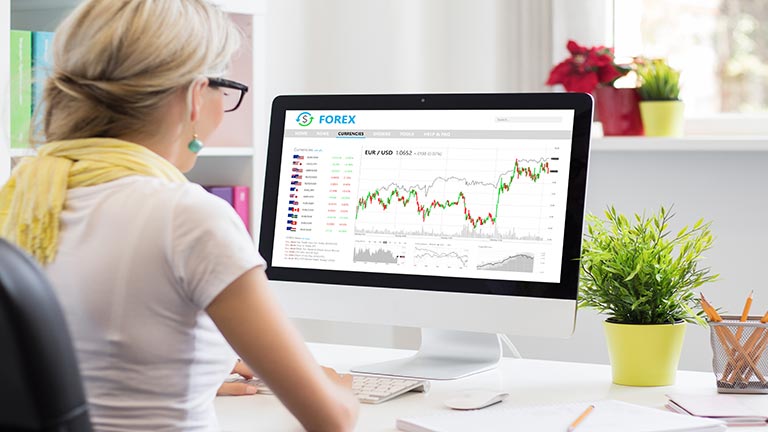How Economic Indicators Affect Forex Markets

By Dale Gillham
Understanding how economic indicators impact Forex markets is essential for anyone looking to trade successfully, particularly within the Australian context. These indicators serve as signals of economic health, influencing currency values and guiding trading decisions. For Australian traders, understanding the effects of these indicators on the Forex market can lead to more informed strategies and improved financial outcomes.

Why Economic Indicators Matter in Forex Trading
Economic indicators are vital statistics that provide insights into a country’s economic performance. Released by government agencies or private organisations, these indicators influence Forex markets by affecting investor confidence and currency valuations. For Forex traders, especially those dealing with the Australian dollar (AUD), monitoring these indicators is crucial for predicting market movements and making informed trading decisions.
For example, when Australia's GDP shows robust growth, it signals a strong economy, which can lead to a stronger AUD as investor confidence increases. Conversely, if employment data reveals a high unemployment rate, it might indicate economic struggles, potentially weakening the AUD.
Key Economic Indicators to Monitor
Several economic indicators are particularly influential in the Forex market, especially for those trading the AUD. Below are the most important ones to watch:
Gross Domestic Product (GDP)
GDP measures the total value of goods and services produced within a country and is a primary indicator of economic strength. A rising GDP typically strengthens the currency, as it reflects economic growth and stability. For instance, a strong GDP report from Australia can boost investor confidence in the AUD, leading to its appreciation against other currencies.
GDP figures are released quarterly, and any significant deviation from expectations can cause sharp movements in the AUD. For traders, understanding the components that drive GDP—such as consumer spending, government expenditure, and net exports—is crucial for anticipating how these reports might affect the Forex market. Furthermore, comparing Australia's GDP growth with other major economies can provide insights into potential currency pair movements, especially when trading against the US dollar (USD), the Euro (EUR), or the Japanese Yen (JPY).
Inflation Rates
Inflation measures the rate at which the general level of prices for goods and services is rising, reducing purchasing power. Central banks, such as the Reserve Bank of Australia (RBA), closely monitor inflation and may adjust interest rates to manage it. Higher inflation often leads to interest rate hikes, which can attract foreign investors seeking higher returns, thereby strengthening the AUD.
For Australian traders, the Consumer Price Index (CPI) is the most watched measure of inflation. The CPI tracks the price changes of a basket of goods and services, offering a clear view of the inflationary trends within the economy. When CPI figures are higher than expected, the AUD might experience a short-term boost as markets anticipate a tightening of monetary policy by the RBA. Conversely, lower-than-expected CPI can lead to a depreciation of the AUD as expectations of interest rate cuts increase.
Employment Data
Employment figures, including the unemployment rate and job creation numbers, are critical indicators of economic stability. High employment levels generally indicate a healthy economy, leading to increased consumer spending and economic growth. For example, a decrease in Australia's unemployment rate could strengthen the AUD, as it suggests a robust labour market and a thriving economy.
In Australia, the employment report is released monthly and includes the unemployment rate, the participation rate, and the number of jobs added or lost. Traders often react quickly to this data, as it provides insights into the health of the economy and potential future monetary policy decisions. A strong employment report might lead to speculation that the RBA will raise interest rates, boosting the AUD, while a weak report could have the opposite effect.
Interest Rates
Interest rates, determined by the central bank, are among the most influential economic indicators in Forex trading. Higher interest rates offer better returns on investments denominated in that currency, attracting foreign capital and increasing demand. The RBA’s interest rate decisions are closely watched by Forex traders, as changes can lead to significant fluctuations in the AUD's value.
The RBA meets eight times a year to set the official cash rate, and its decisions are influenced by various economic indicators, including inflation, employment, and GDP growth. When the RBA raises interest rates, it often leads to an immediate appreciation of the AUD as investors seek higher yields. Conversely, rate cuts can weaken the AUD as investors move their capital to higher-yielding currencies.
Traders should not only focus on the actual rate decision but also pay attention to the RBA's accompanying statement. The tone and language used can provide clues about the central bank's future policy direction, which is crucial for making informed trading decisions.
Trade Balance
The trade balance measures the difference between a country’s exports and imports. A positive trade balance (surplus) indicates that a country is exporting more than it imports, which can be favourable for its currency. Australia, with its economy heavily reliant on commodity exports, often sees its trade balance impacted by global demand for resources like iron ore and coal, which directly influences the AUD.
A strong trade balance is particularly important for Australia due to its status as a major exporter of raw materials. When global demand for Australian commodities is high, the trade surplus increases, which typically supports a stronger AUD. On the other hand, a trade deficit might weaken the AUD, as it suggests that the country is spending more on imports than it is earning from exports.
Trade balance figures are released monthly and can cause significant volatility in the AUD, especially if the data differs widely from market expectations. Traders should also consider the trade balances of Australia’s key trading partners, as shifts in these economies can impact Australia’s export demand.
How Economic Indicators Impact Forex Markets
The relationship between economic indicators and Forex markets is complex, with each indicator influencing currency values in different ways. Here’s how some of these indicators typically affect the Forex market:
Market Sentiment and Speculation
Economic indicators often shape market sentiment by providing insights into future economic performance. Positive economic data can lead to bullish market behaviour, with traders buying the currency in anticipation of further gains. Conversely, negative data can result in bearish sentiment, causing traders to sell the currency. For example, if Australia's GDP growth exceeds expectations, traders might speculate on a stronger AUD, driving up its value.
Market sentiment is also influenced by global economic conditions. For instance, if major economies like the U.S. or China show signs of economic weakness, the AUD might be impacted due to Australia’s strong trade links with these countries. Traders should monitor not only domestic indicators but also global economic trends to get a fuller picture of how the AUD might perform.
Central Bank Policies
Central banks use economic indicators to guide their monetary policy decisions. For instance, if inflation in Australia rises above the RBA's target range, the bank may raise interest rates to cool the economy. Such an action typically strengthens the AUD, as higher rates attract foreign investment. Conversely, weak employment figures might prompt the RBA to lower interest rates to stimulate the economy, which could weaken the AUD.
The RBA's policy decisions are critical for Forex traders. Even subtle hints of future rate changes in RBA statements can lead to significant movements in the AUD. Therefore, traders should pay close attention to both the RBA's interest rate decisions and its forward guidance to anticipate market reactions.
Currency Correlations
Economic indicators also influence currency correlations—how different currency pairs move in relation to each other. The AUD often correlates with commodity prices, particularly gold and iron ore, due to Australia's significant exports of these commodities. When economic indicators suggest strong demand for these resources, the AUD might strengthen against other currencies like the USD or JPY.
Traders who understand currency correlations can develop more effective trading strategies. For instance, if gold prices are rising due to increased global demand, traders might expect the AUD to strengthen. However, if economic indicators suggest a slowdown in China, Australia's largest trading partner, this could negatively impact the AUD even if commodity prices remain strong.
Volatility in the Forex Market
Economic indicators can cause significant volatility in the Forex market, especially when data releases surprise the market. Sudden changes in GDP, inflation, or employment figures can lead to rapid shifts in currency values as traders react to new information. For instance, an unexpected interest rate cut by the RBA could lead to a sharp decline in the AUD as traders quickly adjust their positions.
Volatility can present both opportunities and risks for traders. Those who are well-prepared for economic data releases can take advantage of sudden price movements, but it also requires careful risk management. Traders should use tools like stop losses to protect their positions during periods of high volatility.
Strategies for Trading Forex Using Economic Indicators
To effectively trade Forex using economic indicators, traders should develop a strategy that incorporates the timing of data releases, market expectations, and historical trends. Here are a few strategies to consider:

Economic Calendar Analysis
Traders should use an economic calendar to track when key indicators are released. Being aware of these dates allows traders to prepare for potential market volatility. For instance, if an employment report is due, traders might position themselves based on whether they expect the data to exceed or fall short of market expectations.
An economic calendar also helps traders avoid entering trades during high-risk periods, such as just before a major data release. By understanding the typical market reactions to certain indicators, traders can better plan their entry and exit points, reducing the likelihood of being caught off guard by sudden market movements.
Combining Indicators
Relying on a single economic indicator can be risky. Instead, traders should look at multiple indicators to get a comprehensive view of the economy. For example, if both GDP and employment figures are strong, it may reinforce a bullish outlook for the currency. Conversely, mixed signals from different indicators might suggest caution.
By combining indicators, traders can build a more nuanced view of the market. For instance, while strong GDP growth might suggest a stronger AUD, if inflation is also rising rapidly, the RBA might be forced to raise interest rates, which could have a different impact on the currency. Understanding these relationships allows traders to anticipate market reactions more accurately.
Trading the News
Some traders focus on trading immediately after economic data is released, a strategy known as news trading. This can be profitable but also risky due to potential sharp market movements. For example, if the RBA unexpectedly raises interest rates, quick traders might buy the AUD to capitalise on the anticipated currency strength.
News trading requires quick reflexes and a solid understanding of the market. Traders must be prepared to act swiftly, as prices can move rapidly following an unexpected data release. However, this strategy also carries higher risks, as market reactions can be unpredictable. Using tools like limit orders can help traders manage these risks by automatically executing trades at pre-set levels.
Technical Analysis and Indicators
While economic indicators provide a fundamental view of the market, combining them with technical analysis can offer a more rounded trading strategy. For example, if economic data suggests a bullish outlook for the AUD, traders might use technical analysis tools like counter trends and swing trading to find the best entry points.
Technical analysis helps traders identify trends and potential reversal points, complementing the insights gained from economic indicators. For instance, if the AUD is trending upward following strong economic data, a trader might use a volatility indicator as a signal to enter the market. By combining these approaches, traders can increase their chances of making profitable trades.
The Australian Context: Unique Considerations
Australia’s economy has unique characteristics that traders must consider when using economic indicators. The country’s reliance on commodity exports means that global demand for resources like iron ore, coal, and gold significantly influences the AUD. Additionally, Australia’s geographic proximity to Asia, especially China, means that economic developments in these regions can have a direct impact on the Australian economy and currency.
For instance, if China announces strong industrial production figures, it could lead to increased demand for Australian exports, thereby strengthening the AUD. Conversely, if commodity prices fall due to reduced global demand, the AUD might weaken.
Moreover, the Australian economy is sensitive to shifts in global risk sentiment. During periods of global economic uncertainty, the AUD, often seen as a risk-sensitive currency, might depreciate as investors flock to safer assets like the USD or JPY. Understanding these dynamics is crucial for traders who want to accurately anticipate how economic indicators will affect the AUD.
Mastering the Use of Economic Indicators
Understanding and effectively using economic indicators is crucial for Forex traders, especially within the Australian context. By staying informed about key indicators like GDP, inflation, and employment data, traders can make more educated decisions, improving their chances of success in the Forex market.
Incorporating these indicators into a well-rounded trading strategy, while also considering Australia’s unique economic position, can provide traders with a significant edge. Continuous learning and staying updated with the latest economic trends are essential for long-term success in Forex trading. Mastery of economic indicators, combined with a sound trading strategy, can lead to more consistent and profitable outcomes for Australian traders.






